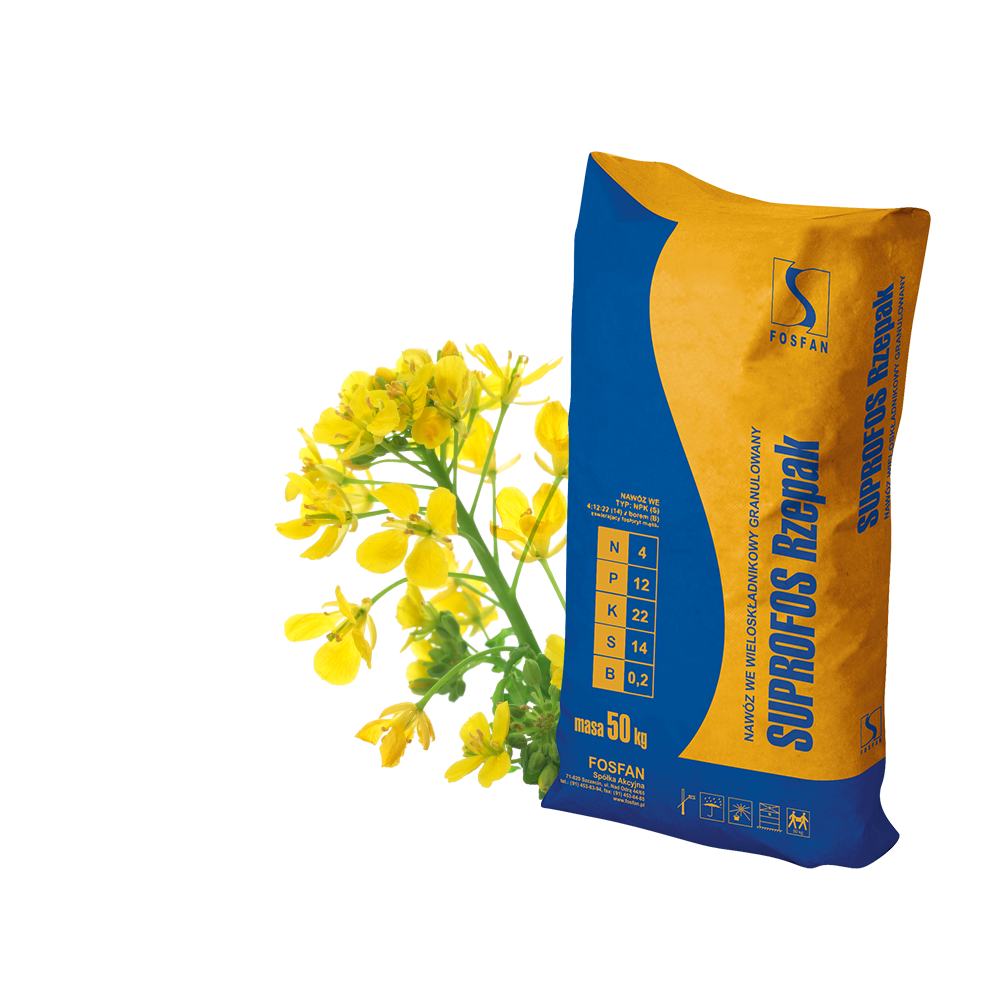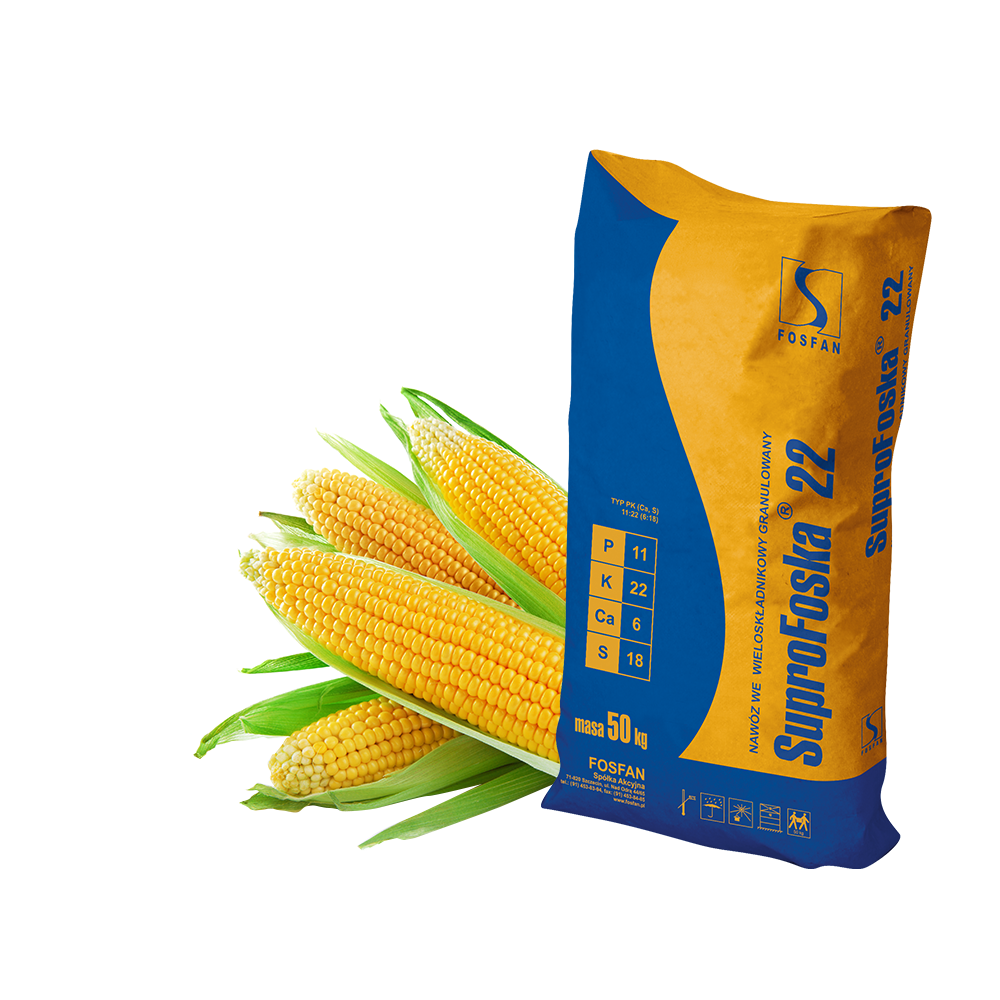Advice
Fertilization of oilseed rape
Oilseed rape is a popular plant widely used among others in the food industry for the production of rapeseed oil and honey. In addition, it is used to produce animal feed, biofuels and varnish. It comes in two forms as: winter oilseed rape, and spring oilseed rape. It is a plant with high nutritional requirements and thus requires a proper systematic fertilization.
more
Winter oilseed rape and spring oilseed rape are plants with high nutritional requirements. They consume twice more nitrogen, phosphorus and potassium as well as five times more calcium from the soil than wheat and additionally significant amounts of sulphur, magnesium and boron, molybdenum and manganese. Depending on the method of fertilization (organic + mineral or mineral only), the preceding crop and natural soil fertility in the cultivation of this plant mineral fertilizers whose composition is chosen so as to meet its specific needs should be used.
These fertilizers include fertilizers containing sulphur in its composition produced by FOSFAN:
- SUPROFOS RZEPAK (sulphur content 14%)
- SUPROPLON (sulphur content 35%)
- SUPROFOS 25 (sulphur content 13%)
- SuproFoska 11 (sulphur content 13%)
- SuproFoska 22 (sulphur content 10%)
- SuproFoska 20 (sulphur content 7%)
The individual components of these fertilizers have a significant impact on the plant condition as well as the size and quality of the yield obtained from them. Fertilizers from FOSFAN contain the particularly important nutrients responsible for the proper growth and development of oilseed rape: phosphorus, potassium, calcium, magnesium, sulphur, boron, molybdenum and nitrogen.
Phosphorus (P) and potassium (K)
Oilseed rape well supplied with phosphorus and potassium forms strong leaf rosettes and strong roots before winter, which supports good overwintering. In the spring, phosphorus and potassium facilitate rapid formation of new leaves and stems, while in the summer they accelerate ripening of seeds in siliques, increase seed yield and the amount of fat. Matt-green, dead leaves, dried and cracked at the edges prove that there is an insufficient supply of potassium for oilseed rape. Between the veining of oldest leaves yellow and brown spots of dead tissue are formed.
Calcium (Ca)
Calcium is essential for correct growth and development of oilseed rape as well as for high yield of seed. Calcium deficiency in the soil results in breaking down of stem tops, weakens flowering, speeds falling of flowers, which causes that there is a small amount of siliques, they are distorted, few and small seeds are formed in them.
MAGNESIUM (MG)
Magnesium stimulates shaping of seeds in siliques and increases the fat content in the seeds. Its deficiency is evidenced by yellowish and rust stains on the oldest leaves (so called marbling or tigering of leaves) and dying of tissues between the veins. In contrast to the symptoms of lack of potassium, edges of the leaves do not dry out or crack and the main veins remain green for a long time.
Sulphur (S)
Sulphur, especially under conditions of high nitrogen fertilization of oilseed rape, positively influences the average yield of seeds per each silique and the fat content, improves also the nutritional value of the rapeseed meal. Increasingly, on double-improved oilseed rape plantations symptoms of lack of sulphur are observed. In the early stages of plant development a bright green colour is visible on leaf edges covering an increasing surface of the lamina, while the veins remain green. Leaves in a rosette are straight and stiff. In the spring so called marbling of the youngest leaves and light curling of their edges can be observed. Flowers are small, very pale, and the number of siliques strongly reduced. They are also small and with a small amount of seed.
BORON (B)
Oilseed rape is very sensitive to boron deficiency in the soil. Without including this micronutrient in fertilization of oilseed rape a high seed yield should not be expected, even under conditions of heavy nitrogen fertilization. Symptoms of a lack of boron can be observed mainly on the stems; they are short and thick, often burst. The apex leaves do not grow, side branches do not appear. Flowering of oilseed rape is limited and siliques are little, filled with a small amount of seed. In this situation from the fertilizers offered by FOSFAN particularly recommended may be SUPROFOS RZEPAK containing in its composition 0.2% of boron.
Molybdenum (Mo)
Lack of molybdenum in the soil adversely affects the growth and yield of oilseed rape. Plants are weak and pale, leaf blades are folded deformed and spoon-shape folded. The youngest leaves have strongly reduced leaf blades.
NITROGEN (N)
In addition to the aforementioned elements, oilseed rape, like all crops, requires nitrogen. High doses of nitrogen fertilizer positively affect the overall yield of seeds, because they promote better branching of plants. Consequently, despite of a certain reduction of the fat content in seeds, the total seed yield and fat obtained from a cultivated area unit is greater than in the effect of fertilization with low doses of this element. Nitrogen fertilization of oilseed rape should always be balanced with the appropriate amount of other macro- and microelements necessary for oilseed rape.
FOR GROWING OILSEED RAPE WE RECOMMEND:
Show all products for fertilization of oilseed rape










